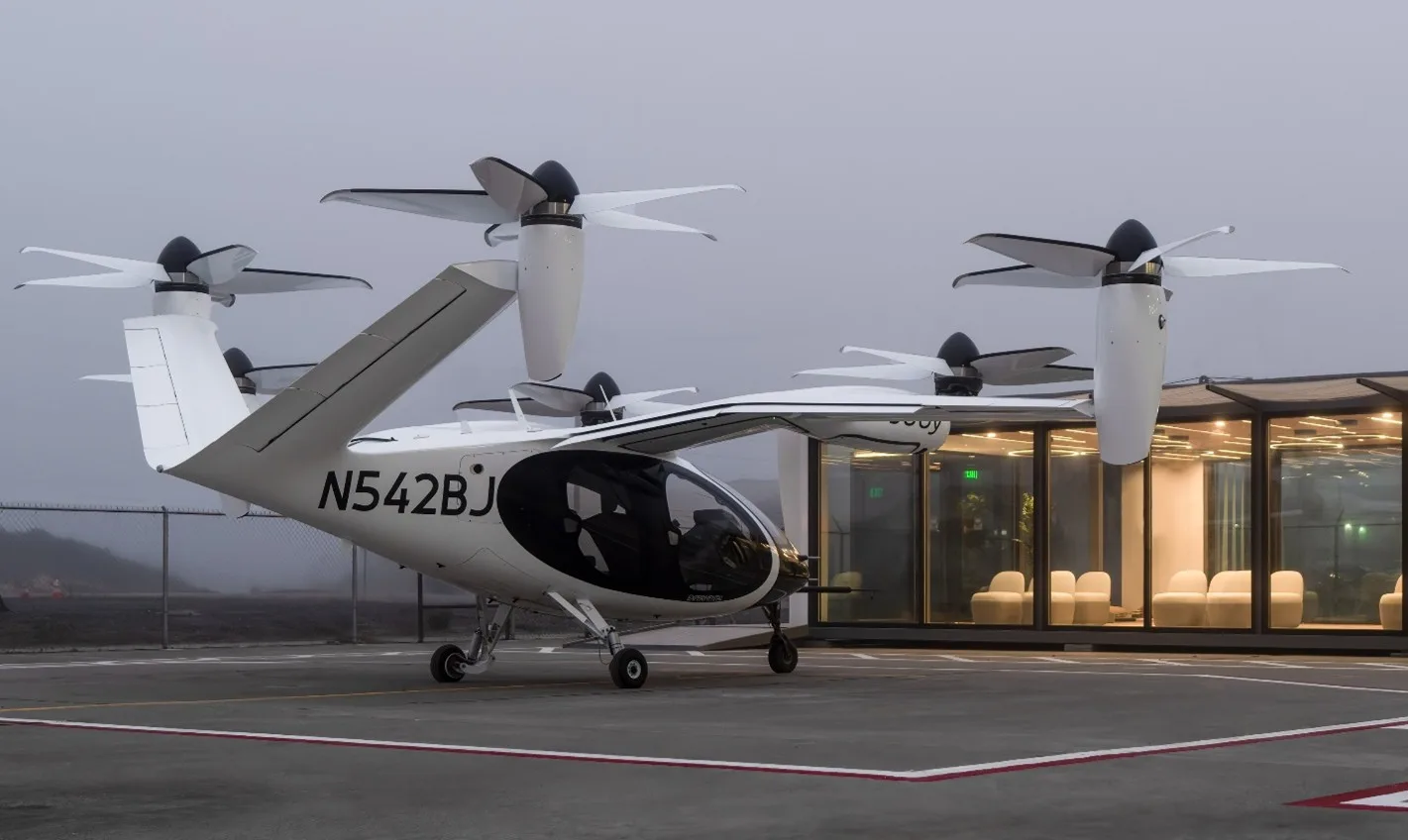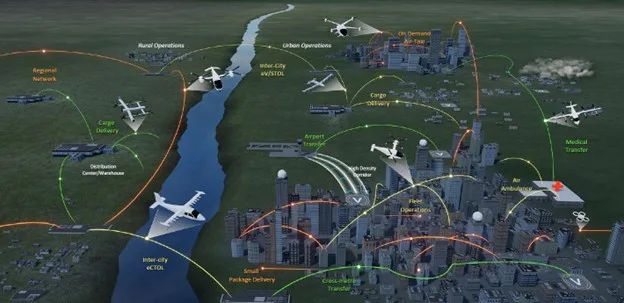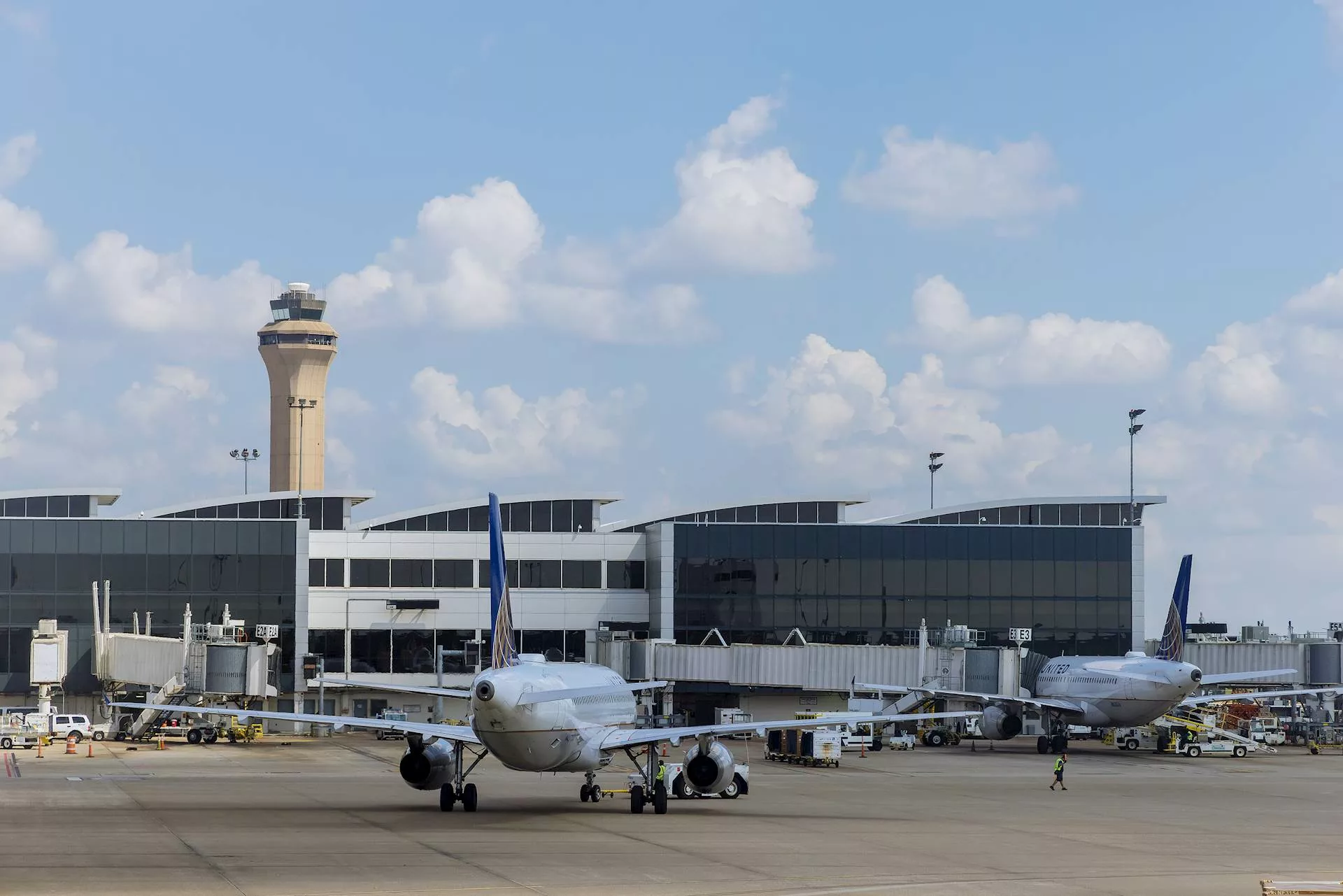
Aerospace companies across the world are developing and testing electric vertical takeoff and landing (eVTOL) aircraft, and their widespread use is imminent. The Federal Aviation Administration (FAA) plans to integrate eVTOL aircraft into national air space in the near future, with electric air taxis, air cargo and regional passenger aircraft expected to start flying soon. A new U.S.-led pilot program initiated by executive order and led by the secretary of Transportation and FAA aims to “accelerate the deployment of safe and lawful eVTOL operations in the United States.” This pilot program has a deadline of December 2025. Meanwhile, according to Business Aviation, the U.S. is collaborating with four other nations, including the U.K. and Australia, to streamline and harmonize air safety regulations between countries by the fourth quarter of 2027. As these efforts qualify the safety and certification of eVTOL aircraft and the use of these aircraft proliferates, electric aircraft will revolutionize how people and goods move — and put tremendous demands on airport infrastructure and the electric grid.
Many unknowns still surround the full-scale adoption of eVTOL aircraft, yet early planning will be critical for putting airports ahead of competitors, setting the standard of operation for modern airports and developing vertiports at airports and other locations.
eVTOL upgrades to aviation industry
Airports with planning and approvals for eVTOL aircraft in place will be able to more efficiently address the biggest infrastructure hurdles on a timeline and budget that works for the airport and eVTOL operators. Additionally, these airports will set themselves up for significant economic development benefits, such as aircraft maintenance; innovative technology businesses; science, technology, engineering and mathematics training; pilot training; and aircraft supply services to locate at the initial airport vertiport sites.
The characteristics that distinguish eVTOL aircraft from traditional aircraft will affect airport infrastructure in several ways. These features include:
1. Vertical takeoff and landing
EVTOLs, which can depart from and land in small spaces, do not require a traditional runway. The resulting convenience and decline in operating costs are expected to drive commercial value and ultimate adoption of these “air taxis” in the near future. To enhance this convenience for customers, airport management should strategically consider where to locate an eVTOL site. For example, building a vertiport on the far side of an airport simply because space is available could eliminate the time and convenience factor that might make eVTOL travel attractive to consumers. A location more palatable to travelers might be near ground-based services such as terminals, food, rental cars, taxi or Uber pickup locations.
Future vertiports, which could be located in a variety of places, such as airports, open greenfields, urban parking garages or building rooftops, will fall into three categories tied to the level of operational activity at each location. The categories include:
- Vertistop: This clearly marked piece of apron or pavement is a place for eVTOLs to charge and pick up or drop off passengers. They can often be built on helipads.
- Vertiport: In the future, small airports or urban structures may exclusively serve eVTOLs. In addition to a landing area, these microairports would provide aircraft stands, recharging and turnaround equipment, a passenger terminal, operational control room functions and safety and security facilities.
- Vertihub: Similar to hub airports, these eVTOL-focused facilities would serve as many as eight final approach and takeoff areas on a small footprint but would accommodate more amenities and high-volume eVTOL operational activity.

2. Electric propulsion
Powered by fast-charging batteries, eVTOLs will provide a sustainable solution for air travelers — and a tremendous energy load for airport operators. Airport operators can expect a fast-charging vehicle to use as much as half a megawatt. Adding three or four such vehicles at one time to an airport’s energy load could overburden the local grid.
Additionally, airport operators will struggle to meet increased electrical loads as the aviation industry moves toward net-zero carbon emissions. Airports must develop energy master plans to address the electrical demands of power-over-vehicle charging in public parking areas, rental-car charging, electric ground service equipment, airport and airline electrical ground fleets and electrical aircraft. Plus, these added energy loads must be accommodated in airport sustainability mandates.
An energy master plan can help an airport prepare for these energy demands. In a typical plan, the first task might involve developing an energy efficiency strategy, which would establish a new baseline of demand for the airport and forecast future electrical demand. The remainder of the master plan would include alternatives for addressing the new demand and selecting the airport’s best options.
Airports are all different, so there is no “one-size-fits-all” energy master plan. The options are wide-ranging and may include microgrid development and identifying renewable energy sources to power a microgrid and battery storage to cover peak demands and developing a public-private partnership or other innovative funding options with a local energy company. One of the most important goals for undertaking a macro-level energy master plan should be an airport’s long-term energy resilience. Electric ground service and fleet vehicles have already arrived at many airports. An energy master plan should help an airport/vertiport operator determine the energy capacity investments that will allow a full range of electric vehicles to operate resiliently in the long term.
3. Advanced air mobility planning requirements
Like with electric automobiles, vertiport planning requires lithium battery fire safety considerations. However, because aircraft battery fires can be even more catastrophic, every vertiport concept needs a solid plan for responding to and distinguishing lithium fires. On a positive note, battery technology continues to improve each year.
The planning requirements for establishing a vertiport on airport property are more rigid than for an urban-based vertiport, but proper planning for both is critical for the safety, security and operational efficiency of aircraft and personnel on the ground. At a minimum, a vertiport based at an airport needs a document for the concept of operations that addresses safety, security and mutual aid requirements; airspace and obstructions; operational parameters and frequency; electrical loading at operational peak; availability; and scope of customer service needs. Along with the above, the FAA would require at least a red-line airport layout plan update, the required National Environmental Policy Act (NEPA) documentation and an airspace/obstruction analysis.
4. Commercial viability for the new technology
For aircraft operators, eVTOL flights can be performed at a fraction of the maintenance and operating costs of a helicopter or fixed-wing aircraft. BETA Technologies’ 2023 test flight of its eVTOL demonstrated the value proposition for airports and consumers alike: Each leg of the roughly 200-mile flight cost for the conventional safety/chase plane was approximately $700 in fuel charges, while the cost for the eVTOL electrical charge was only $17.
Still, many airport operators have valid questions about the overall commercial viability of these aircraft because of the cost of infrastructure that will be required to support them. If vertiport landing fees are set at unreasonable levels to amortize infrastructure debt, this will offset the much lower operations and maintenance costs for these aircraft. The industry has no readily available business models to shed light on the level of vertiport use charges that will allow eVTOL to flourish. This is because, much like airports, no two vertiports will be exactly alike in cost structure and operation.
Regarding commercial viability for individual vertiports, conventional advice has been to start with a minimum set of facilities that will allow your market to grow at the lowest cost of entry. Additionally, airports should maximize the significant grant resources that are available to support innovative, multimodal and green transportation. Airports should also take advantage of creative public-private partnership opportunities, with private investment looking to benefit from public infrastructure.
How to prepare for eVTOL aircraft
Airports and consultants rely on historical data to inform their capital development decisions. But in this new age of eVTOL and electric conventional aircraft, as well as hydrogen and sustainable-aviation fuel (SAF)-powered aircraft, there is no linear path to follow or precedent on which to base forecasting. This makes rigorous early planning essential. This early planning would take the form of a comprehensive advanced air mobility (AAM) master plan.
In developing an AAM master plan, airport operators should begin their work in three key areas:
- Site planning: Airports need to understand the customer’s value proposition surrounding this new technology. The proposition relies on saving time, finding convenience and accessing standard amenities. The selected site should provide quick and easy access to terminal or fixed-base operator facilities.
- Electrification planning: For a simple vertistop with a charging facility, a basic electrification analysis will usually suffice. In planning for a more significant vertiport, airport operators should take a more comprehensive look at the overall electrical demands forecast for the airport/facility. A campuswide electrification plan would be beneficial so that the electrical efficiency audits, resiliency needs, future accommodation of new electrical uses (aircraft, privately owned vehicles, rental cars and ground-service fleets) and the need for a microgrid can be analyzed and a plan developed.
- Concept of operations (CONOPS): The CONOPS is a key component to a comprehensive AAM master plan. The CONOPS process would include a use case and forecast; an airspace analysis to include arrival and departure corridors; a safety and security plan; charging, sustainable aviation fuel and hydrogen infrastructure needs considerations; a Part 139 update (as necessary); and a landside and airside ground movement plan for the required NEPA documentation.
Plan now — the future is closer than you think
The AAM planning process is likely three to five years, considering consultant selection through federal, state and local site approvals. Contrast that time frame with the certification and arrival of electric aircraft, which is projected to begin in 2027. This means that AAM master planning should be underway soon to allow the public infrastructure to keep up with the technology. Airports in major metro areas may already be behind the curve. Other airports should consider starting so they will have all the necessary approvals when the market arrives.
The good news for airports: There is abundant federal funding, which should eliminate the need for out-of-pocket spending, except for a local match. Hanson’s smart airport program is set up to help you find funding and customize an approach that works for your needs. Contact us to get started.





